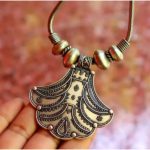Will 3D Printing Bring Sustainable Fashion to Textile Industry?

3D printing is another idea to the material business however is frequently touted as the manageable assembling model for this industry. Top eco-accommodating originators see 3D printing as the panacea of the assembling ills present in the conventional assembling framework. Prior, 3D printing was kept to make plastic models yet it has taken huge walks in the zone of material advancement with various strands in the ongoing years. 3D printing is equipped for starting another period of reasonable style.

Here are a portion of the courses through which 3D printing is pushing the design business into being manageable.
No misuse of generation: Generally, in the style business, fashioners need to make various examples that are hand crafted to address the person’s issues. With 3D printing, an architect’s creation can be decreased to the check of one. With this innovation, one can spare the additional expense of generation, stockpiling and space to meet the production line’s base prerequisites. Further, 3D printing innovation uses precise amount of materials required for creation, and in this manner, there is no yardage of cut textures and no need of obtaining additional materials.
Eco-accommodating generation: The customary advancement procedure takes a year prior to the style really hit the market; it includes various item adjusts and materials sourcing from various sellers. Be that as it may, with 3D printing, the majority of these means are done carefully before the main example is made. 3D printers enable you to choose which materials and what configuration to deal with. This lessens the trash to a high degree.
Furthermore, originators spare a great deal in transportation costs, as the creation of an example through 3D printers is hyper-neighborhood. One needs to simply pull the examples from advanced documents and items can be made nearby.
Utilization of biodegradable materials: Biodegradable plastics are produced using a blend of starch, gelatine, vinegar and water. Despite the fact that it is as yet not being used in the material business, the thought is picking up energy at an extraordinary pace. PLA (Poly Lactic Acid) is the most normally utilized bio-plastic, got from corn. It’s anything but difficult to utilize and is considered as a protected material.
Reusing of materials: There are 3D printers that utilization fibers from the disposed of soft drink and plastic containers in their cartridge. Likewise, fibers produced using disposed of metal and silk items can likewise be devoured in 3D printing.
Then again, the above-depicted PLA can likewise be dissolved down and reused by the client’s needs. Such kind of material can be perpetually restored and in this manner, can be an economical response to the environmentally harming material generation.
Broadening life of items: Another modern bit of leeway of 3D imprinting in the design business is expanding the life of existing items or by restoring them with new embellishments or reproducing missing adornments.
Obviously, 3D printing will demonstrate greener than some other sort of assembling process in the material business yet until and except if 3D printed items coordinate the vibe, solace and toughness of common strands, the eventual fate of 3D printing appears to be hopeless. A few leaps forward are required before this high fashion transforms into available style.










